
Pampanga is a province in the Central Luzon region of the Philippines. Lying on the northern shore of Manila Bay, Pampanga is bordered by Tarlac to the north, Nueva Ecija to the northeast, Bulacan to the east, the Manila Bay to the central-south, Bataan to the southwest and Zambales to the west. Its capital is the City of San Fernando. Angeles, while geographically within Pampanga, is classified as a first-class, highly urbanized city and is governed independently of the province.
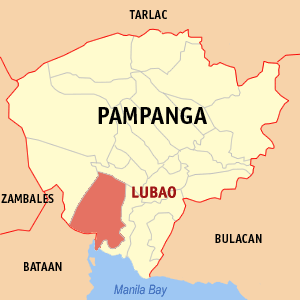
Lubao, officially the Municipality of Lubao, is a 1st class municipality in the province of Pampanga, Philippines. According to the 2015 census, it has a population of 160,838 people.

Mabalacat, officially the City of Mabalacat, is a 3rd class component city in the province of Pampanga, Philippines. According to the 2015 census, it has a population of 250,799 people.

Floridablanca, officially the Municipality of Floridablanca is a 1st class municipality in the province of Pampanga, Philippines. According to the 2015 census, it has a population of 125,163 people. Floridablanca is a part of the province of the Pampanga located in Central Luzon lying north of Dinalupihan, Bataan and south-southwest of San Fernando, Pampanga.
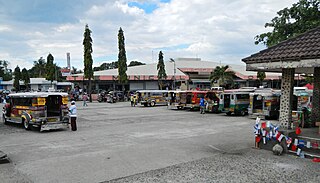
Botolan, officially the Municipality of Botolan, is a 1st class municipality in the province of Zambales, Philippines. According to the 2015 census, it has a population of 57,707 people.
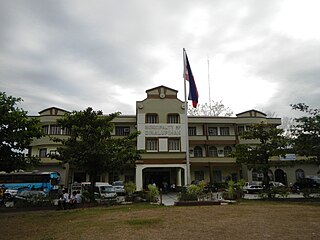
Dinalupihan, officially the Municipality of Dinalupihan, is a 1st class municipality in the province of Bataan, Philippines. According to the 2015 census, it has a population of 106,371 people.

Pilar, officially the Municipality of Pilar, is a 3rd class municipality in the province of Bataan, Philippines. According to the 2015 census, it has a population of 41,823 people.
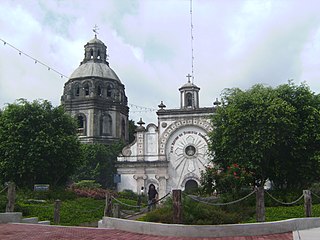
Bacolor, officially the Municipality of Bacolor, is a 3rd class municipality in the province of Pampanga, Philippines. According to the 2015 census, it has a population of 39,460 people.

Macabebe, officially the Municipality of Macabebe, is a 1st class municipality in the province of Pampanga, Philippines. According to the 2015 census, it has a population of 75,850 people.

Minalin, officially the Municipality of Minalin, is a 4th class municipality in the province of Pampanga, Philippines. According to the 2015 census, it has a population of 47,713 people.

San Luis, officially the Municipality of San Luis, is a 3rd class municipality in the province of Pampanga, Philippines. According to the 2015 census, it had a population of 54,106 people.

Santa Ana, officially the Municipality of Santa Ana, is a 3rd class municipality in the province of Pampanga, Philippines. According to the 2015 census, it has a population of 55,178 people.
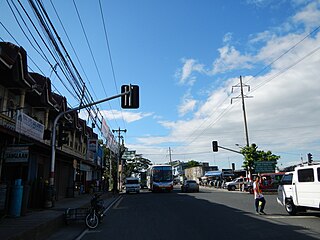
San Simon, officially the Municipality of San Simon, is a 3rd class municipality in the province of Pampanga, Philippines. According to the 2015 census, it has a population of 53,198 people.

Santa Rita, officially the Municipality of Santa Rita, is a 4th class municipality in the province of Pampanga, Philippines. According to the 2015 census, it has a population of 40,979 people.

Doña Remedios Trinidad, officially the Municipality of Doña Remedios Trinidad, is a 1st class municipality in the province of Bulacan, Philippines. According to the 2015 census, it has a population of 22,663 people.

Norzagaray, officially the Municipality of Norzagaray, is a 1st class municipality in the province of Bulacan, Philippines. According to the 2015 census, it has a population of 111,348 people.

Capas, officially the Municipality of Capas, is a 1st class municipality in the province of Tarlac, Philippines, and one of the richest towns in the province. The town also consists of numerous subdivisions and exclusive villages.

Tarlac City, officially the City of Tarlac, is a 1st class component city and capital of the province of Tarlac, Philippines. According to the 2015 census, it has a population of 342,493 people.

Victoria, officially the Municipality of Victoria, is a 2nd class municipality in the province of Tarlac, Philippines. According to the 2015 census, it has a population of 63,715 people.

General Mamerto Natividad, officially the Municipality of General Mamerto Natividad, also known as Gen. M. Natividad, is a 4th class municipality in the province of Nueva Ecija, Philippines. According to the 2015 census, it has a population of 41,656 people.






























